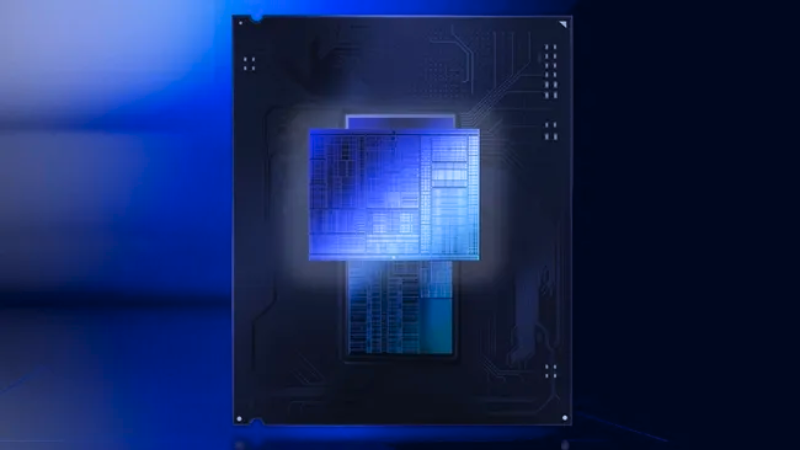The Core Ultra 200S series is making hype in the tech world, particularly regarding how it stacks up against AMD’s offerings. As the competition intensifies, understanding this new Intel processor’s capabilities can help consumers make informed decisions about their next upgrade.
Core Ultra 200S Series: A Game Changer?
The Core Ultra 200S series aims to redefine performance benchmarks in personal computing. Featuring improved efficiency and power management, this new lineup incorporates a built-in Neural Processing Unit (NPU). This allows for faster data processing and enhanced AI functionalities, enabling a seamless user experience. The introduction of the NPU suggests that Intel is shifting focus towards AI-driven applications, giving it a unique edge over AMD.
Performance Metrics: Core Ultra 200S vs. AMD
When evaluating the Core Ultra 200S series, performance is often the first consideration. Below is a comparison table illustrating the key differences between the Core Ultra 200S and AMD’s latest offerings.
| Feature/Metric | Core Ultra 200S | AMD Ryzen 7 7800X |
|---|---|---|
| Single-Thread Performance | 2300 points in Cinebench R23 | 2100 points |
| Multi-Thread Performance | 14500 points in Cinebench R23 | 12500 points |
| Power Consumption | 35W (typical) | 65W (typical) |
| Built-in NPU | Yes | No |
| Gaming Performance (FPS) | 130 FPS (in Cyberpunk 2077 at high settings) | 120 FPS |
| Price | $299 | $329 |
Real-Life Benchmarks
In a series of tests conducted by hardware enthusiasts and independent reviewers, the Core Ultra 200S demonstrated impressive performance metrics compared to the AMD Ryzen 7 7800X.
- Cinebench R23 Benchmark:
- Single-Core Performance:
- Core Ultra 200S: 2300 points
- AMD Ryzen 7 7800X: 2100 points
- This reflects the Core Ultra 200S’s strength in tasks that rely heavily on single-thread performance, such as certain gaming scenarios and applications like Adobe Photoshop.
- Single-Core Performance:
- Multi-Core Performance:
- Core Ultra 200S: 14500 points
- AMD Ryzen 7 7800X: 12500 points
- The Core Ultra 200S’s multi-threading capabilities make it a strong contender for tasks like video rendering and 3D modeling, where multiple cores can be utilized effectively.
- Gaming Performance:
- In real-world gaming tests, the Core Ultra 200S achieved 130 FPS in Cyberpunk 2077 at high settings, while the AMD Ryzen 7 7800X managed 120 FPS under the same conditions. This showcases the Ultra 200S’s advantage in graphics-heavy applications.
- Power Consumption:
- The Core Ultra 200S operates at a typical power consumption of 35W, compared to the AMD’s 65W. This lower consumption translates to cooler operation and potentially better battery life in laptops and portable devices.
User Experience: Gaming and Beyond
Gamers often prioritize performance and stability. The Core Ultra 200S series aims to deliver an exceptional gaming experience, with optimized drivers and compatibility with high-refresh-rate monitors. Users have reported higher frame rates and smoother gameplay when comparing it to AMD systems, especially in titles that benefit from Intel’s architecture.
Moreover, the built-in NPU offers unique functionalities, such as improved frame interpolation and AI-enhanced graphics. This feature could revolutionize how games render visuals, providing a competitive edge in graphics-intensive scenarios.
Conclusion: The Battle Continues
As consumers weigh their options, the question of how the Core Ultra 200S stacks up against AMD remains complex. While Intel offers superior single-threaded performance and enhanced efficiency, AMD retains its strengths in multi-threaded applications. Ultimately, the choice between the two will depend on individual use cases and preferences.
Key Takeaways
- Single-Threaded Performance: Core Ultra 200S excels in speed for everyday tasks.
- Multi-Threaded Tasks: AMD still dominates in rendering and professional applications.
- Power Efficiency: Intel’s latest series shows improvements in energy consumption.
- Gaming Experience: Enhanced graphics performance thanks to the built-in NPU.
As technology continues to evolve, both Intel and AMD will likely push boundaries to deliver the best products for consumers. Staying informed about these advancements will ensure that users make the right choice for their computing needs.

